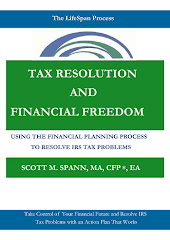Can you afford to let the IRS levy your bank account or garnish your wages? That is what could happen if you owe back taxes and avoid their attempts to contact you.
IRS collection activities are negative events and represent anything but freedom, and therefore should be avoided. You must be proactive and take action to avoid IRS collection measures such as wage garnishments, bank account levies, property seizures, and liens placed on your property. It is important to know what the IRS is capable of doing. Most people find this knowledge a helpful motivator to stay on track with the tax resolution process. If the collection process has already started you should still proceed through the tax resolution process quickly and accurately to start resolving your tax problems on your terms rather than simply accepting defeat and allowing the IRS to control your financial life.
What does the IRS typically attempt to levy?
The IRS may intent to levy any federal payments due, retirement benefits, Social Security benefits, wages, or employee travel advances or reimbursements. The IRS can also levy property such as real estate, automobiles, business assets, bank accounts, wages, commissions, and other income. A levy is a seizure of property. The IRS will try to levy assets unless you TAKE ACTION. Why allow the IRS or any creditor to take control of your assets on their terms? If you owe taxes you need to pay them (or at least come up with some type of tax resolution alternative). However, you need to have a plan to pay them on your terms and not the terms of the IRS.
The IRS may involuntary collect the tax debt owed to them through different types of levies. A levy is served after the IRS has exhausted all other collection efforts to encourage taxpayer compliance. Levies commonly attach a taxpayer’s bank account, salary and wages, and/or business accounts receivable.
The IRS is required to release levies in several circumstances, including:
• The levy is creating an economic hardship.
• The taxpayer agrees to make an Installment Agreement.
• The liability is no longer owed.
• The 10-year statutory collection period has expired.
• The levy was wrongfully served.
• An Offer in Compromise is accepted for review.
The two circumstances most often utilized to request a levy release are when the levy is creating an economic hardship or when the taxpayer agrees to make an Installment Agreement. In both of these situations, the taxpayer must provide a Collection Information Statement for Individuals and Self-Employed Individuals (Form 433-A) and/or Collection Information Statement for Businesses (Form 433-B). To obtain a levy release, the taxpayer must also file all required tax returns and be current in estimated payments or Federal Tax Deposits, if required.
The IRS usually will not release a levy until the taxpayer has proposed a solution to the delinquent tax problem and demonstrated that they will remain in compliance with future obligations. In certain circumstances, the IRS may release a levy if the taxpayer promises missing tax returns or financial information by a fixed date, but this cannot be counted on. It is always best if the taxpayer can get all of the needed documentation before contacting the IRS for a release of levy.
In conclusion, if you are facing the possibility of an IRS levy it is always in your best interests to take action. Do not avoid the tax problem. A tax resolution plan is a proactive strategy that will help you resolve tax debt problems the best way possible for your situation.
Contact LifeSpan Financial Planning at 877-TAX-9110 if you are interested in finding out more about using a Tax Resolution Plan to overcome tax problems.
Wednesday, October 7, 2009
Tax Debt and IRS Levies
Labels: tax resolution, financial plan, tax debt
IRS problems,
levy,
tax debt,
tax resolution
Subscribe to:
Post Comments (Atom)





No comments:
Post a Comment